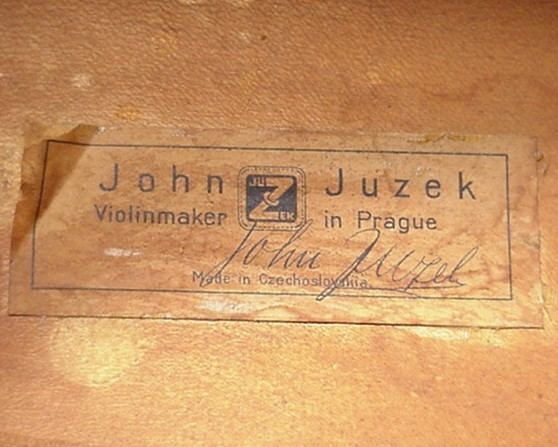 | ||
John juzek master art
John Juzek (né Janek Jůzek, aka Jan, aka Johann;1892 Písek, Czech Republic – approx 1965 Schönbach, Czech Republic) was a Czechoslovakian merchant, widely known in North America as an exporter of violins, violas, cellos, and double basses made and labeled under his anglicized name, "John Juzek," crafted mostly by guilds and various independent makers in the Bohemia region of the Czechoslovakia and Germany border.
Contents
- John juzek master art
- John juzek violin very old
- The string instruments
- Addresses
- Metropolitan Music Co
- Publications of Metropolitan Music Co
- Notable musicians who own John Juzek instruments
- Juzek family
- References
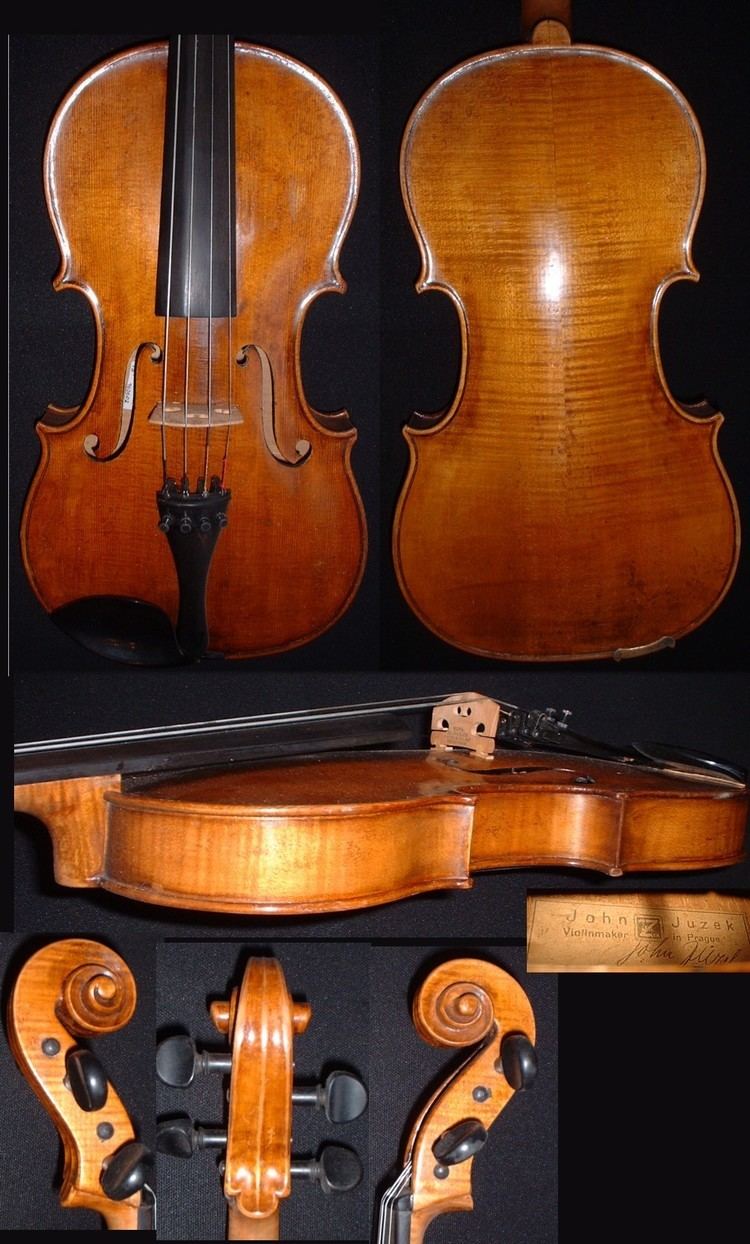
The John Juzek trademark, brand, and line of orchestral string instruments endures today through the original ninety-six-year-old family-owned wholesaler, Metropolitan Music Co., currently owned and managed by the heirs of Robert Juzek (1894–1975), a founding partner and sibling of John Juzek.
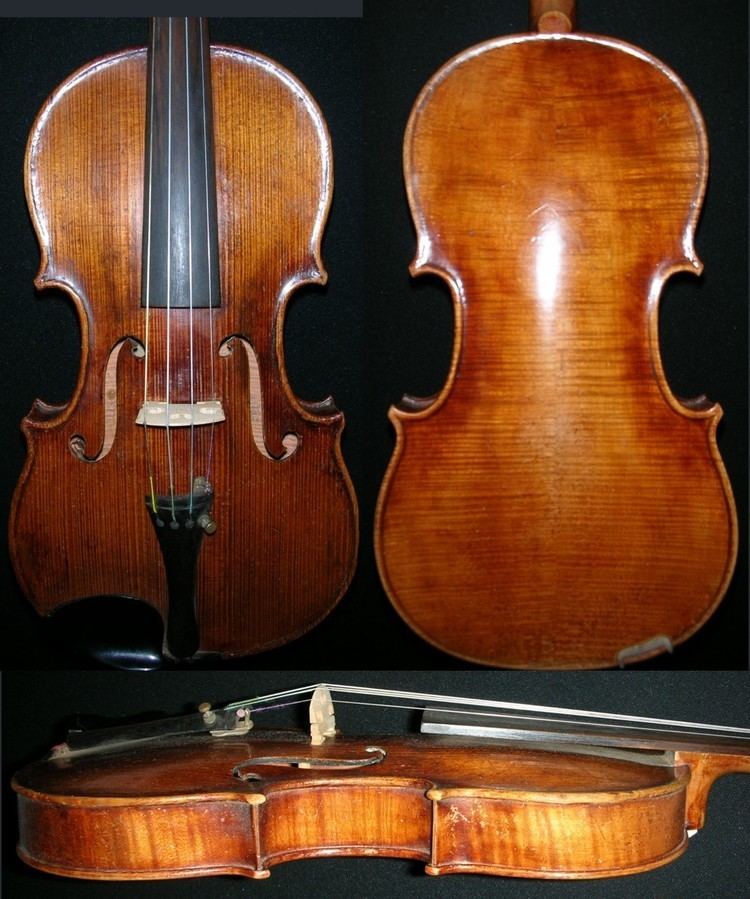
John juzek violin very old
The string instruments

The John Juzek imprint on the labels inside the F-holes reflect an import-to-the-U.S trade name, not the craftsman. The city and country imprint reflects the location of Juzek's shops, mostly in Prague before World War II. From 1920 through the 1970s, the craftsmen were from the Bohemia region on both sides of the German-Czechoslovakian border. Extant instruments from the 1920s have labels reading "Jan Juzek," the Czech version of his given name, yet other parts of the label, "Violin Maker in Prague," are spelled in English.
Black labels indicate that the instrument was made by an outside vendor. Multicolored labels were used for violins.
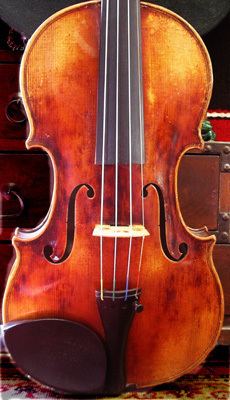
Janek Juzek, himself, was a violin maker, and crafted instruments in his own shop in Prague sometime between 1910 and 1920, using wood from torn down houses and churches, when he could find it, otherwise from the Carpathian Mountains, which formed the eastern border of Czechoslovakia. For the Master Art series, Juzek adopted standard patterns of classic violin lutheirs, including:
- Stradivarius
- Guarnerius: Guarnerian outline, soundholes slightly elongated; Stradivarian scroll
- Nicolò Gagliano
- Guadagnini
- Testore
- Maggini
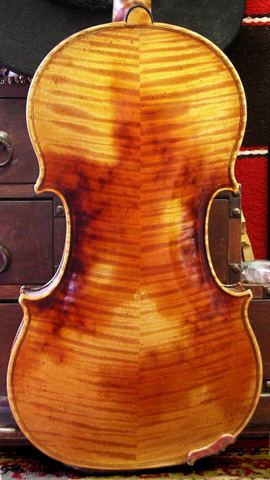
As demand for string instruments in North America increased, John Juzek purchased violins violas, cellos, and double bases from craftsmen, mostly from Schönbach, and, according to advertising literature of Czechoslovak to build instruments fitting his specifications.
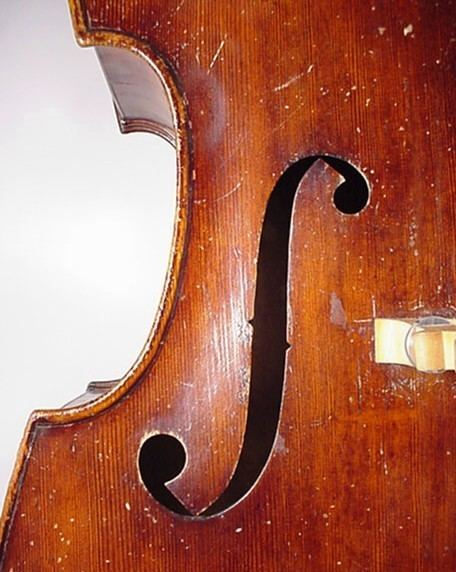
In the early 1900s, John Juzek ran a factory in Schönbach, Czechoslovakia (renamed Luby after World War II), where the John Juzek labeled instruments were crafted. Juzek also was the export merchant for independent craftsmen, for whom the instruments were also labeled with the John Juzek name.

Schönbach, well known for violinmaking, was once dubbed the "Austrian Cremona" when Bohemia was part of Austria-Hungary. From 1880 to the beginning of World War II, and even through the 1970s, Bohemia was a thriving area in eastern Germany and Czechoslovakia, where student-quality violin making flourished as a supplier to North America. To support the town's industry, Schönbach founded the Violin Making School, founded in 1908 as an addition to the Schönbach Music School founded in 1873.
A nearby town, Markneukirchen (5 miles / 8.6 kilometers from Schönbach), produced about seven million violins, violas, cellos, and basses from 1880 to 1914. Markneukirchen, during that era, was the financial center of the German music industry and before 1914, it had more millionaires per capita than any other city in Germany. Markneukirchen, with a population of 7,847 in 1900, produced and exported so many instruments to the United States that it was home to an American Consulate with a trade attaché. The rapid rise and subsequent fall of sales to the U.S. was driven by strong U.S. currency and low labor costs in Bohemia region of Czechoslovakia.
In 1900, Schönbach gained access to electricity and was connected to a railway network. In the following years, more than 3,000 craftsmen were employed as violin makers — annual production increased to 150,000 units. In the summer of 1927, the Luthier monument was unveiled in Schönbach, memorializing all the unknown violin makers and producers of musical instruments who have made outstanding contributions in Schönbach. During The Great Depression and World War II violin making in Schönbach declined dramatically. Immediately following World War II, almost all luthiers of German descent living in Czechoslovakia were deported. Most settled in either Bubenreuth or Erlangen.
The instruments were sold in North America, mostly in the New York City area, exclusively through Metropolitan Music Co. (originally named Czechoslovak Musical Instruments Company), a New York City firm founded in 1920 by Robert J. Juzek (1894–1975) Robert's four brothers were involved in the business in various capacities:
- John Juzek
- William Juzek (1905–1942)
- Jerry Juzek (né Jaromir Juzek; 1901–1991)
- Charles Juzek (né Karel Juzek; 1896–1979)
Before the founding of Czechoslovak Musical Instruments Company, Robert Juzek had traveled to New York aboard the SS Imperator, arriving March 2, 1920, as a secretary for the Czecho Slovak Commercial Corp., located at 59 Pearl Street, New York City, a Czechoslovakian exporter of orchestral instruments.
By the 1930s, the Czechoslovak Musical Instruments Company in New York City was selling violins, violas, cellos, double basses, mandolins, banjo mandolins, ukuleles, banjo ukuleles, tenor ukuleles, tiples, banjos, tenor banjos, and guitars.
After World War II ended, John Juzek no longer was connected with Metropolitan Music Co. Robert Juzek began making all the contracts directly with the shops. When Robert Juzek died in 1975, his son, Bob Juzek (né Robert Juzek; born 1938) became the president. Metropolitan Music Co. is now managed by Bob's two sons, Rob and Adam, the third generation family of the founder. The current John Juzek string instruments are made in Europe and China.
Addresses
Metropolitan Music Co.
Metropolitan Music Co. hired and sponsored several immigrant luthiers, including:
Publications of Metropolitan Music Co.
Notable musicians who own John Juzek instruments
The Finer violin cornered basses with Juzek labels were made by the Wilfer family: Anton Wilfer (1901–1976) (pre-WWII), Wenzl B. Wilfer (post-WWII thru the 1970s) — and now Emanuel Wilfer. They were first made in Czechoslovakia; but after WWII, they moved across over the border to Germany. The Gamba shaped basses as well as the plywood basses were supplied by the Benedict Lang I shop in Schönbach pre-World War II and B. Lang II in Mittenwald post-World War II.
Some of the Master Art Copy violins and cellos imprinted with higher numbers dated in the 1950s and 1960s were made by Roman Teller (died 1974), who moved to Erlangen, West Germany after World War II.
Juzek family
John Juzek managed the production and export of Bohemian crafted string instruments to New York City in the aftermath of World War I, through duress of the Great Depression of the early 1930s, the subsequent Nazi occupation that began in 1939, and World War II. Czechoslovakia, the name and the country, did not exist until 1918; and it ended in 1993 when the Czech Republic was formed.
Písek, the town where John Juzek and his five siblings were born, was part of the Austro-Hungarian Empire that existed from 1867 to 1918. In 1919, one year after the founding of Czechoslovakia, the Treaty of St. Germain triggered civil unrest between the Sudeten German population and the new Czechoslovak administration. From 1939 to 1945 Czechoslovakia was forcibly divided and partially incorporated into Nazi Germany. Schönbach, the main staging area where Juzek operated when the brand was founded in 1920, was part of Sudetenland, which from 1939 to 1945, was annexed to Germany as part of Hitler's Nazi occupation. In 1946, many people of Schönbach were displaced (see commentary under "Manufacturing region," above).
In 1921, Jan Juzek was single and resided in Pisek, Czech Republic. In 1930, he was married to Ella (born 1909 Pisek) and together they lived in Schönbach. In 1936, he was living in Kolín, 34 miles east of Prague.
